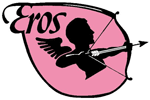Practice Management Software: What Are The Basics For Optical Practice Today?
Originally IT systems were only conceived as an automatic method for sending recall letters. So it sat on the desk, you’ve paid for it, and only use 15% of its working capability. Makes no sense does it?
Flexibility, ease of use, robustness and a range of modular tools that you can gradually engage; these are the buzzwords to look for. As is the ability to get all the information you have fed into the box out in a readable and useful way. Whatever it produces in reports, there is a great advantage in getting .csv files out and into Excel type spreadsheets to play around with yourself.
This is a must for retrieving sales and purchase information for applying MTD (Make Tax Digital) for HMRC VAT returns.
Some systems make it nigh on impossible to pull out information without a degree in computer science and when advising clients on business improvements we like to see a system that can show your business positioning and trending and like a barometer will advise of storms ahead.
Practices have many varying agreements with Customs over VAT on dispensing and therefore they need a flexible till system and unobtrusive security to protect staff and your business from fraud.
Look for stock control that will provide answers to stocking problems and be interactive and historical in its ability to make stock mix selection simple. As regular quarterly stock takes are a must for any business to watch its product type gross profit metrics make sure it’s quick and simple to do the job.
3 pricing fields are preferred, cost price (the purchase cost after discounts you paid), long price (the undiscounted price) which you should mark up from and finally the retail price containing VAT.
Best practice in management allows us to experiment with “if and what games. So we like to be able to change information and prices and see what happens, forwards and backwards on past data without affecting the operation of your PMS system.
The beauty of a well set up PMS is that within days it reduces the time it takes to use old day books and petty cash sheets as well as the difficulties of tracking debtors and expediting jobs, whilst at the same time the system is busy gathering information you will one day find invaluable to your business.
There should be no extra feeding of information in; it collects all the facts it needs as you use the system properly in the practice .Using IT properly and fully in the practice does mean you save yourself time in which you can act on the results it gives you.
Whilst the decision making on choice is often made by the owner/optometrist this often means that the clinical ability of the machine overwhelms the other reasons for selection. But don’t sacrifice the business end of the machine as this will be your main helper in profit improvement in the future.
Be very careful of clinical note taking and the later reporting of findings, the system must give enough selection in choice on clinical reporting to ensure you are complying with GOC rules. Many systems now offer large free writing areas within the notes which should not be ignored.
When faced with a litigation matter you might be alarmed at the limited read outs that you are left providing insurance companies.
 At Eros Consultants we are here to assist in PMS selection having been actively involved in at least 3 PMS systems development over the years.
At Eros Consultants we are here to assist in PMS selection having been actively involved in at least 3 PMS systems development over the years.